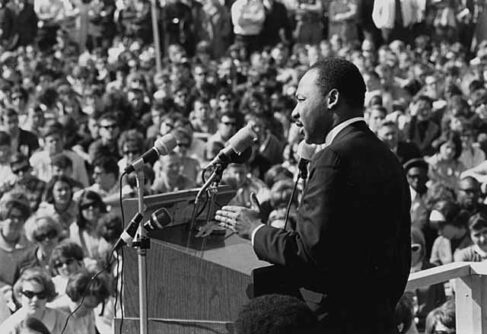This week’s Miss Manners column by the delightful and wise Judith Martin featured a dilemma that highlights the moral character of philanthropy:
DEAR MISS MANNERS: Is it ever acceptable to donate money at all levels of giving so that one’s name appears multiple times on a program?
We are not talking about endowing a trombone and, for example, a musical chair, but at the friend level, the donor level, the patron level . . . well, you get the picture.
If one can afford to give at all levels, the assumption is made that one would give only once at the highest level, even if one’s donation far exceeded the lower limit of, say, $15,000 for top recognition.
These same donors, while their obvious generosity was appreciated, donated numerous very high-priced auction items (trips to their expensive vacation home, etc.) and made certain they were listed as purchasers of the more expensive items and, I might add, many of them. What is to be made of this behavior?
GENTLE READER: There was such a chap, Miss Manners recalls, who gave to all possible causes at all levels. She did not actually know him. Apparently, nobody did, as he seems to have been a modest person, who gave for the sake of helping causes, with no interest in glorifying himself.
His name was Anonymous. He doesn’t seem to get around much anymore.
But as this is about charity, you might exhibit some toward those often-named donors. Perhaps it was the beneficiaries who plastered those names around, because they thought it was expected, or to encourage others to give. And it is reasonable to expect that before bidding on using someone’s house, one would want to know whose house it was.
In any case, Miss Manners supposes that while it does, indeed, make the philanthropists look a bit foolish to insert themselves at all levels on the same program, there are worse ways to buy publicity.
Pity the poor orchestra staff member who must deal with such a publicity-seeking donor! And the unreasonable fear that he risks their wrath by missing out on some occasion to recognize the donor’s contribution.
In spite of Miss Manners’s suggestion that Mr. Anonymous doesn’t get around much any more, the Chronicle of Philanthropy reported that anonymous giving is on the rise. But the motive for remaining anonymous is only sometimes to avoid flattery; very often, the motive is personal convenience or safety:
Above all, officials say, the desire to avoid publicity motivates donors to conceal their names. Some worry about undue attention on their children, or the awkward social consequences if the neighbors realize how many millions the couple next door is worth. Some worry about being kidnapped and held for ransom.
Some donors have changed their practices over time; the Chronicle of Philanthropy piece describes Michael Bloomberg’s earlier anonymous philanthropy; now, of course, Mr. Bloomberg openly practices philanthropy, as with his recent gift to Johns Hopkins University. Meanwhile, the Koch brothers -- Charles and David -- are said to be ever-more-secret in their giving in the wake of the Citizens United decision.
Giving publicly has become the norm -- indeed, it has become expected and the failure to do so an occasion for criticism: the Giving Pledge promoted by Warren Buffet and Bill Gates encourages big donors not to hide their philanthropy -- while the late Steve Jobs was sharply criticized by some for not being a public philanthropist.
Alas, too seldom is the value of anonymous giving as enhancing the moral character of the donor recalled. Moses Maimonides, the twelfth-century philosopher, ranked charitable acts in large part in accordance with how the donor and recipient were shielded from one another to protect the recipient from shame and the donor from pride. Of course, giving is now often to foundations and nonprofits rather than to individuals -- but the same considerations of protecting donors from pride remain.






